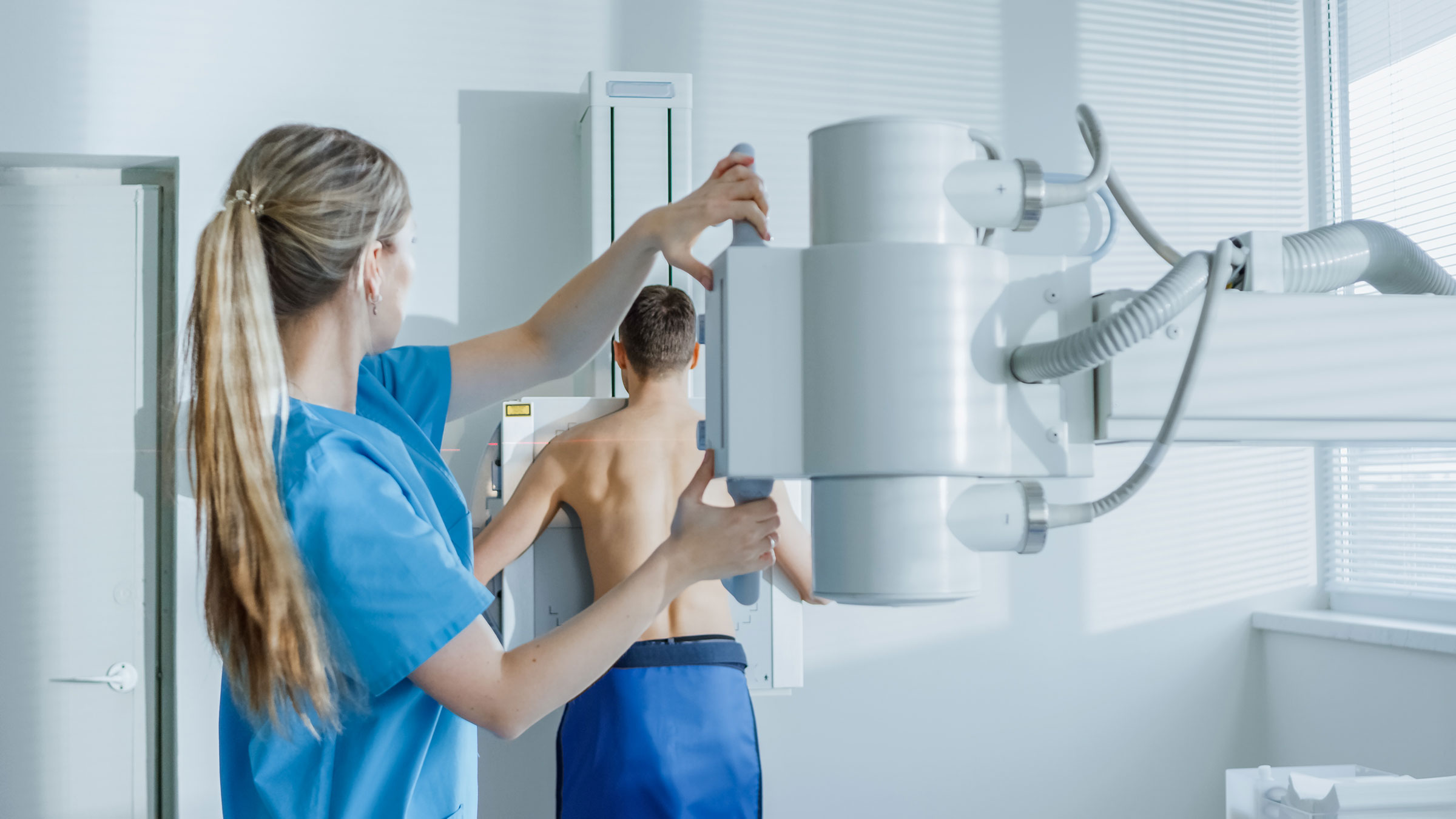X-RAY / FLUOROSCOPY OVERVIEW
X-ray, also called general or diagnostic radiography, is an extremely valuable and common tool in the diagnosis of internal injuries and other medical conditions.
X-ray exams begin by sending beams of energy through the body. Bones and other dense materials (like a foreign object inside the body) will absorb more of this energy than organs and soft tissues - creating clearer images of concentrated energy. The X-ray camera detects the energy and produces pictures of the internal structures. The bones appear white or gray on the x-ray image, while soft tissues will appear darker.
Fluoroscopy is an X-ray imaging technique that captures moving pictures of internal structures and displays them on a video monitor like a movie. Radiologists can use fluoroscopy to view internal organs in motion and with the help of contrast material, in addition this allows for organ function assessment at the same time. This tool can also be used to guide needle placement during myelography and joint injections.
What should I expect?
General radiography exams usually take between 10 to 30 minutes, depending on the type of exam/procedure. You may be asked to change into a gown if your clothing has zippers or buttons.
Usually, there are no restrictions following a typical X-ray exam. However, if you receive a fluoroscopy exam, such as a myelogram of the spinal cord, you may receive some post-exam instructions.
Like all imaging exams, a radiologist will review your results and compare your exam to any of your previous studies that are applicable. A report will be then be created and sent to your physician.
How do I make an appointment?
Most of the time, your physician’s office will work directly with Inland Imaging to schedule an appointment for you. If you have been asked to make your own appointment, contact Inland Imaging for scheduling information at 509.455.4455 or toll-free at 1.800.826.2944. Before calling, be sure your physician's order and insurance information (including pre-authorization, if needed) are readily available. Women who may possibly be pregnant should notify the technologist immediately before receiving the exam.
Bone Densitometry | Hysterosalipinogram | Lumbar Puncture
Myelogram | Upper Gastrointestinal | Voiding Cysto-Urethrogram

